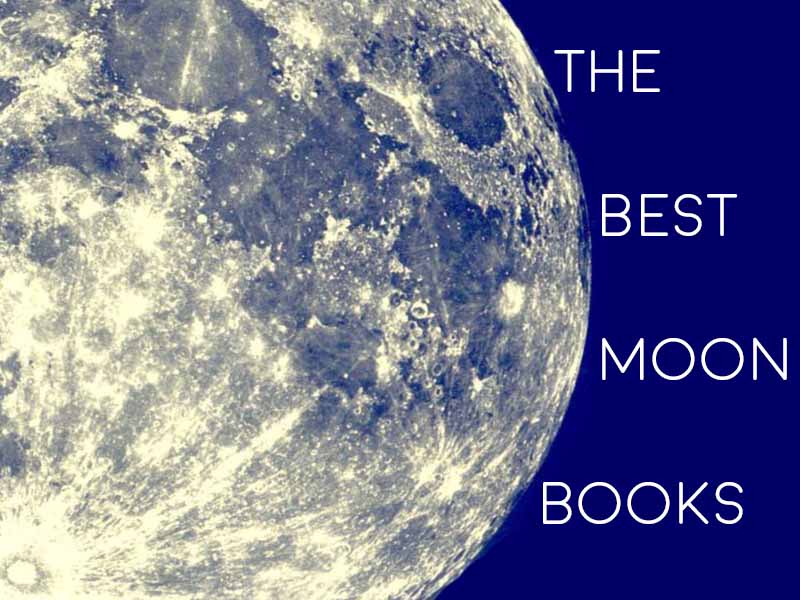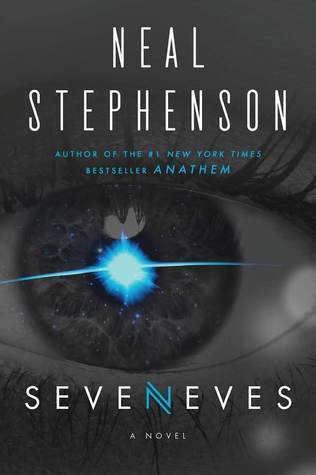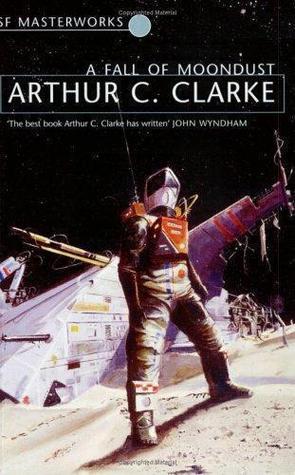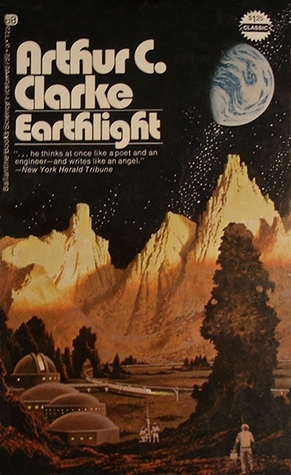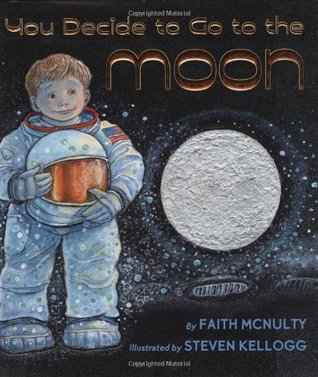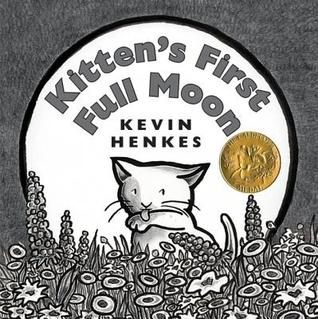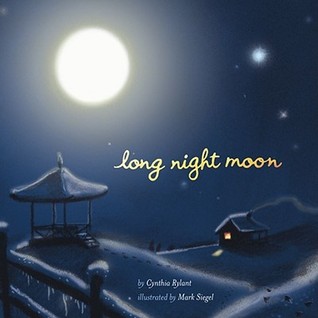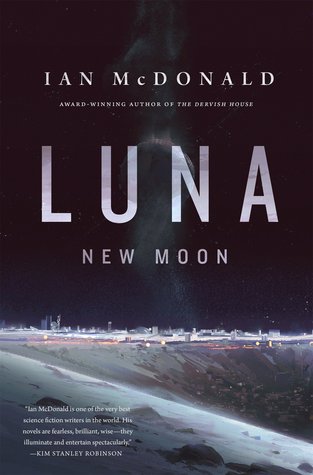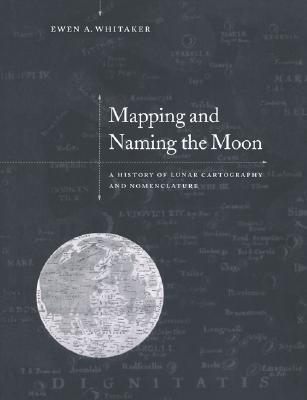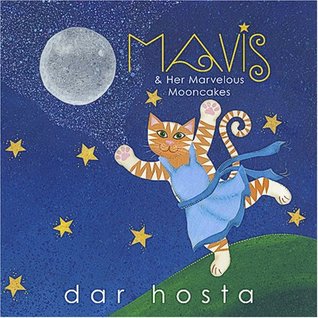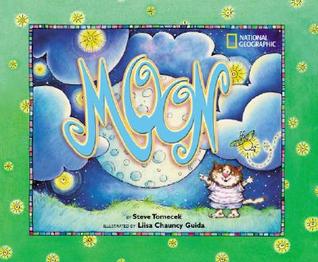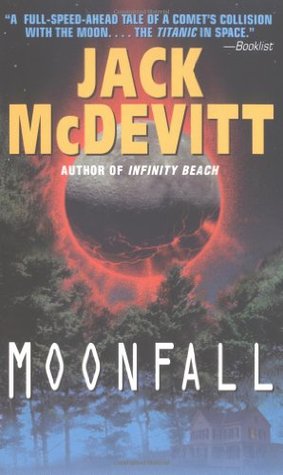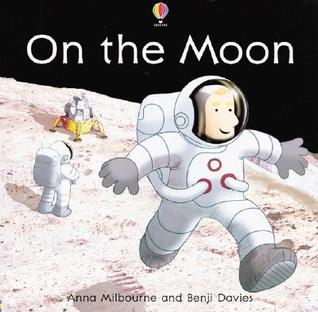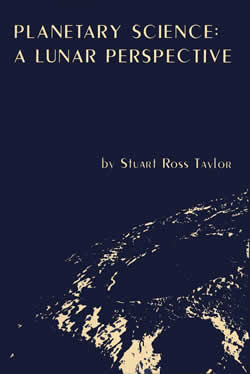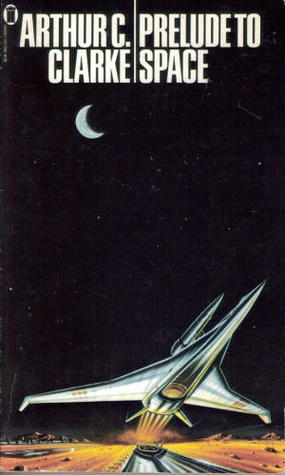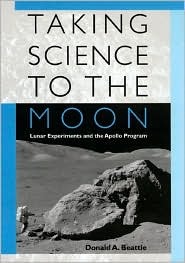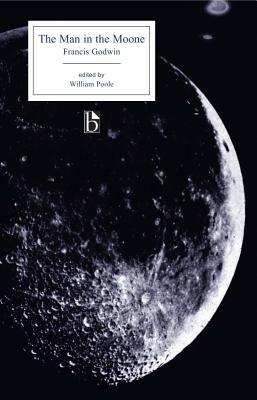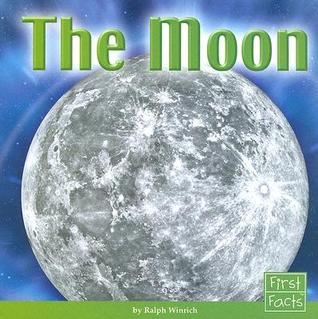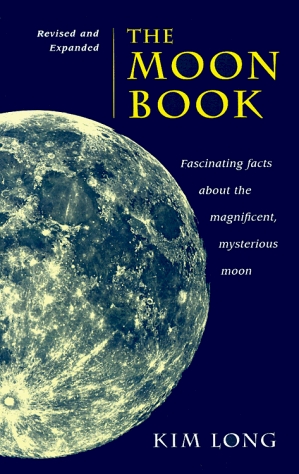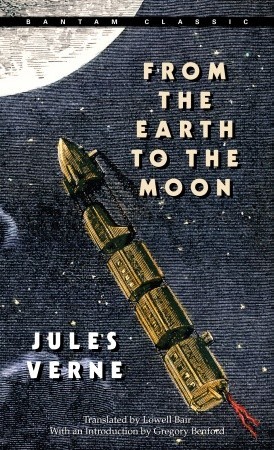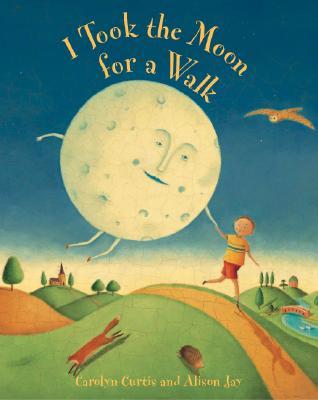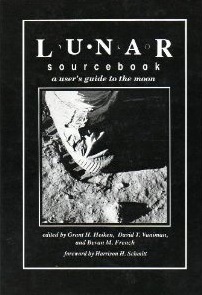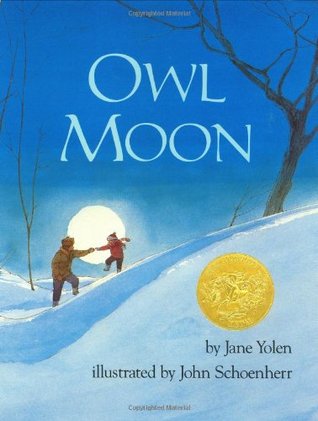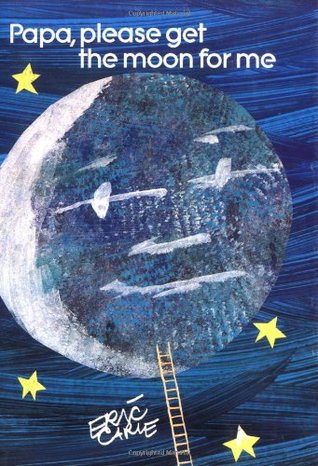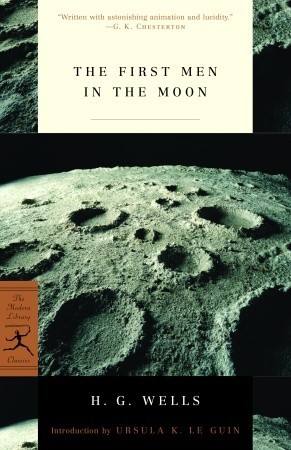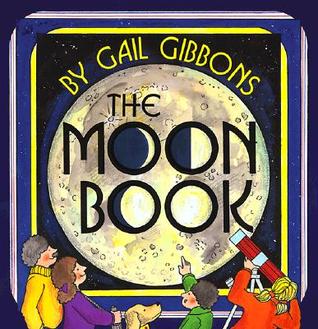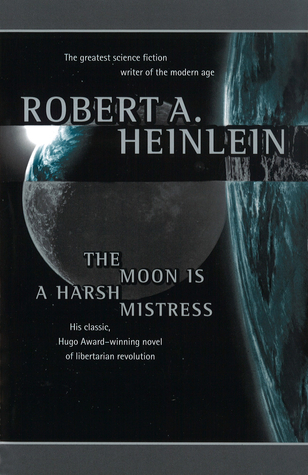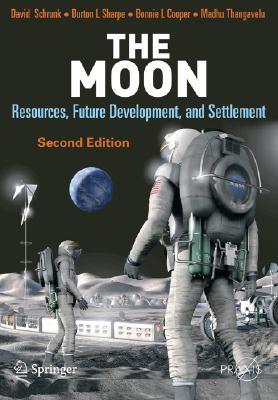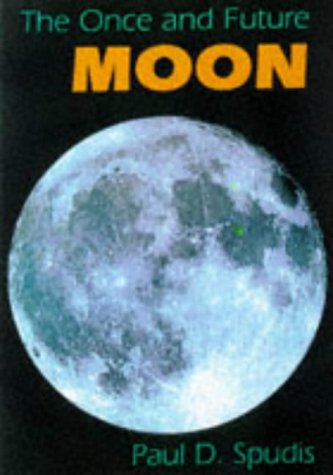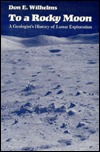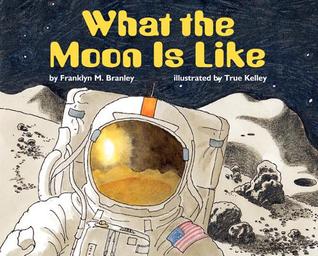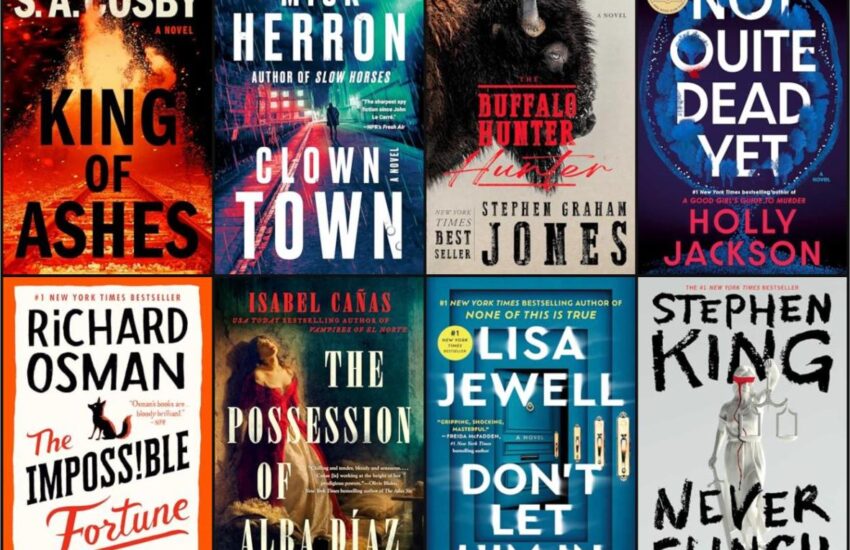The Top Books About Or Featuring The Moon
“What are the best books about or featuring the Moon?” We looked at 226 of the top Moon books, aggregating and ranking them so we could answer that very question!
We found over 200 books about or featuring the moon. There are nonfiction books, science fiction titles, children’s tales and every other moon related type of book you can think of.
The top 33 titles, all appearing on 2 or more “Best Moon” articles, are ranked below by how many times they showed up. The remaining books, as well as the articles we used, are listed in alphabetical order on the bottom of the page.
Happy Scrolling!
Top 33 Books About The Moon
Editors Choice – Seveneves by Neal Stephenson
Seveneves is our pick because it touches most of the genres covered in this article. It is both about the moon and what would happen to the Earth without it. It is Science Fiction with a lot of real science.
“A catastrophic event renders the earth a ticking time bomb. In a feverish race against the inevitable, nations around the globe band together to devise an ambitious plan to ensure the survival of humanity far beyond our atmosphere, in outer space.
But the complexities and unpredictability of human nature coupled with unforeseen challenges and dangers threaten the intrepid pioneers, until only a handful of survivors remain . . .”
33 .) A Fall of Moondust by Arthur C. Clarke
Lists It Appears On:
- Wikipedia
- Best Science Fiction Books
“A lunar cruise ends in disaster after a moonquake sinks the cruiser Selene beneath a sea of liquid-fine lunar dust on the Moon’s Sea of Thirst. Facing enormous environmental barriers, the rescue team finds their courage, ingenuity, and resources tested to the breaking point-as trapped passengers and crew slowly run out of time.
Originally published in 1961, A Fall of Moondust was nominated for a Hugo Award for Best Novel-and was the first science fiction tale chosen as a Reader’s Digest Condensed Book. Informed by the most current scientific knowledge of the time, A Fall of Moondust is a realistically-conceived and gripping story of human resourcefulness and triumph in the face of nearly-insurmountable challenges.”
32 .) Earthlight by Arthur C. Clarke
Lists It Appears On:
- Wikipedia
- Wikipedia
“Earthlight” was first published in the August 1951 issue of Thrilling Wonder Stories. It was later expanded into the novel of the same name.
31 .) Grandfather Twilight by Barbara Berger
Lists It Appears On:
- Teaching With Kids’ Books
- Feels Like Home
“When day is gone, and shadows begin to deepen, it is time for Grandfather Twilight to close his book, put on his jacket, and go for a walk through the forest.
Little birds hush as he walks by, and the rabbits and other small creatures watch in silence as he performs his very special evening task and returns to his house among the trees. Small readers and listeners, too, will sense the serenity of this poetic story, and will be comforted to learn that the twilight is a gentle, friendly time.”
30 .) If You Decide To Go To The Moon by Faith McNulty
Lists It Appears On:
- Teaching With Kids’ Books
- Natural Beach Living
A young boy narrates an imaginary journey to the moon and back to Earth again.
29 .) Kitten’s First Full Moon by Kevin Henkes
Lists It Appears On:
- Chalk In My Pocket
- Feels Like Home
Kitten’s First Full Moon is an acclaimed modern classic, from one of the most celebrated and beloved picture book creators working in the field today. This memorable character and her suspenseful adventure are just right for the very youngest child. It is Kitten’s first full moon, and when she sees it she thinks it is a bowl of milk in the sky. And she wants it. Does she get it? Well, no . . . and yes. What a night!
28 .) Long Night Moon by Cynthia Rylant
Lists It Appears On:
- Natural Beach Living
- Fantastic Fun And Learning
Have you ever stopped to consider what might be revealed in one spot over one year by twelve unique and exquisite full moons?
27 .) Luna: New Moon by Ian McDonald
Lists It Appears On:
- Wikipedia
- Best Science Fiction Books
“In Ian McDonald’s Luna: New Moon, the scions of a falling house must navigate a world of corporate warfare to maintain their family’s status in the Moon’s vicious political atmosphere.
The Moon wants to kill you.
Maybe it will kill you when the per diem for your allotted food, water, and air runs out, just before you hit paydirt. Maybe it will kill you when you are trapped between the reigning corporations-the Five Dragons-in a foolish gamble against a futuristic feudal society. On the Moon, you must fight for every inch you want to gain. And that is just what Adriana Corta did.
As the leader of the Moon’s newest “”dragon,”” Adriana has wrested control of the Moon’s Helium-3 industry from the Mackenzie Metal corporation and fought to earn her family’s new status. Now, in the twilight of her life, Adriana finds her corporation-Corta Helio-confronted by the many enemies she made during her meteoric rise. If the Corta family is to survive, Adriana’s five children must defend their mother’s empire from her many enemies… and each other.”
26 .) Mapping and Naming the Moon: A History of Lunar Cartography and Nomenclature by Ewen A. Whitaker
Lists It Appears On:
- The Moon Society
- Lunar Registry
Almost thirty years after the Apollo missions, “Tranquillity Base”, “Hadley Rille”, or “Taurus-Littrow” are names still resonant with the enormous achievements represented by the lunar landings. But how did these places get their names? Who named Copernicus crater? Where did all those names on lunar maps come from, and what stimulated their selection? Ewen Whitaker traces the origins and evolution of the present-day systems for naming lunar features such as craters, mountains, valleys and dark spots. The connections between the prehistoric and historic names, and today’s gazetteer are clearly described. Beautiful lunar maps spanning four centuries of progress wonderfully illustrate the unfolding of our ability to map the Moon. Rare, early photographs add to the sense of history. Comprehensive appendices and the bibliography make this delightful book a work of lasting reference and scholarship.
25 .) Mavis & Her Marvelous Moon Cakes by Dar Hosta
Lists It Appears On:
- Feels Like Home
- Chalk In My Pocket
Some people say that the moon is made of cheese, but Miss Mavis Sugar and her friends know a sweet, little secret… the moon is made of CAKE! Join Mavis Sugar, a lovable striped, orange cat in a colorful, contemporary folktale about lunar phases. Miss Mavis is mixing up something marvelous just for you! Dar Hosta’s vibrant collages will delight your eyes and her rollicking rhymes and alliteration are a delicious recipe for a fun and engaging read. This is one tale that will have you grinning from ear to ear. Mooncake, mooncake is so nice! Now don’t you wish you had a slice?
24 .) Moon by Steve Tomecek
Lists It Appears On:
- Teaching With Kids’ Books
- Fantastic Fun And Learning
A cartoon cat and bug explain scientific history and concepts regarding the Earth’s moon: its ever-changing appearance, composition, comparisons to Earth and the sun, Galileo’s observations and discoveries in 1609, astronauts, orbits, and other topics. Busy, colorful borders are full of decorative details based on the main pictures. A concluding craft project gives instructions on how to make craters.
23 .) Moonfall by Jack McDevitt
Lists It Appears On:
- Wikipedia
- Best Science Fiction Books
“It’s the 21st century, and all is right with the world. Or so it seems.
Vice President Charlie Haskell, who will travel anywhere for a photo op, is about to cut the ribbon for the just-completed American Moonbase. The first Mars voyage is about to leave high orbit, with a woman at the helm. Below, the world is marveling at a rare solar eclipse.
But all that is right is about to go disastrously wrong when an amateur astronomer discovers a new comet. Named for its discover, Tomikois a “”sun-grazer,””an interstellar wanderer with a hundred times the mass and ten times the speed of other comets. And it is headed straight for our moon.
In less than five days, if scientists’ predictions are right, Tomiko will crash into the moon, shattering it into a cloud of superheated gas, dust, and huge chunks of rock that will rain down on the earth, causing chaos and killer storms, possibly tidal waves inundating entire cities…or worse: a single apocalyptic worldwide “”extinction event.””
In the meantime, the population of Moonbase must be evacuated by a hastily assembled fleet of shuttle rockets. There isn’t room, or time enough, for everyone. And the vice president, who rashly promised to be last off (“”I will lock the door and turn off the lights””), is trying to figure out how to get away without eating his words.”
22 .) On the Moon by Anna Milbourne
Lists It Appears On:
- Fantastic Fun And Learning
- Feels Like Home
This is a new title in the fantastic “First Reading” series, part of ‘The Usborne Young Reading Programme’. It is aimed at children who are beginning to read. Let your imagination fly – soar into space and take a trip to the moon. It features photographs with real images of the moon and fun puzzles after the story to consolidate learning. Developed in consultation with Alison Kelly, who is a Principal Lecturer in Education and an early reading specialist from Roehampton University. Every title in this series features clear and compelling text accompanied by highly appealing illustrations. It is designed to motivate children as they learn to read.
21 .) Planetary Science: A Lunar Perspective by Stuart Ross Taylor
Lists It Appears On:
- NSSDC
- The Moon Society
20 .) Prelude to Space by Arthur C Clarke
Lists It Appears On:
- The Guardian
- Wikipedia
“Here is the compelling story of the launching of Prometheus – Earth’s first true spaceship – and of the men who made it happen.
Dirk Alexson, chronicler of the greatest space adventure of all time: He was chosen to immortalize the incredible story of the men and their heroic mission.
Sir Robert Derwent, Direct-General of Interplanetary-London Headquarters for the International Space-Flight Project: He was the man who got the mission off the ground and into the pages of history.
Professor Maxton, the world’s leading atomic engineer: He designed the huge ship’s drive units and he waited with the rest of the world to see if the project would be a success.”
19 .) Somnium by Johannes Kepler
Lists It Appears On:
- The Guardian
- Wikipedia
According to Carl Sagan and Isaac Asimov, Kepler´s “Somnium” (“The Dream”), written around 1611, should be considered the first science-fiction novel ever. The eminent astronomer Johannes Kepler imagines a trip to the moon and speculates about its inhabitants and astronomy.
18 .) Taking Science to the Moon: Lunar Experiments and the Apollo Program by Donald A. Beattie
Lists It Appears On:
- NSSDC
- The Moon Society
How did science get aboard the Apollo rockets, and what did scientists do with the space allotted to them? Taking Science to the Moon describes, from the perspective of NASA headquarters, the struggles that took place to include science payloads and lunar exploration as part of the Apollo program. Donald A. Beattie—who served at NASA from 1963 to 1973 in several management positions and finally as program manager, Apollo Lunar Surface Experiments—here supplies a detailed, insider’s view of the events leading up to the acceptance of science activities on all the Apollo missions.
17 .) The Consolidator by Daniel Defoe
Lists It Appears On:
- The Guardian
- Wikipedia
“Daniel Defoe (1660?-1731) was a prolific English writer who became one of the first Western writers to write novels and turn them into a sought after literary genre. During his life, Defoe wrote more than 500 books, pamphlets and journals on topics as wide ranging as politics, crime, religion, psychology, supernatural events, and even economics.
While those are all impressive accomplishments, Defoe’s name has lived on through Robinson Crusoe, one of the first and finest novels ever written. The book is written as a fictional autobiography of Robinson Crusoe, a castaway who spends nearly 30 years on a tropical island, where he encounters all kinds of danger and adventures. Published in the early 18th century, the novel may have been inspired by a real Scottish castaway, Alexander Selkirk, who lived for nearly 5 years on a Pacific Island. That island’s name has since been changed to Robinson Crusoe Island. Robinson Crusoe was a stark departure from the typical literature of the day, which was still based on ancient mythology, legends, and history.”
16 .) The Man in the Moone by Francis Godwin
Lists It Appears On:
- Wikipedia
- Best Science Fiction Books
A 17th century adventure tale of swan-powered lunar exploration. Written in 1638, The Man in the Moone was one of the earliest science fiction books and an important influence on the development of the genre. In it the narrator Domingo Gonsales reaches the moon by accident when the trained swans pulling his flying machine proceed on their annual lunar migration. Highly imaginative and entertaining throughout.
15 .) The Moon by Ralph Winrich
Lists It Appears On:
- Teaching With Kids’ Books
- Fantastic Fun And Learning
Did you know that we on Earth always see the same side of the Moon? Or that the Moons rocky, dusty surface is covered with craters? Look inside to learn more about the Moon and its place in the solar system.
14 .) The Moon Book: Fascinating Facts About the Magnificent, Mysterious Moon by Kim Long
Lists It Appears On:
- Love The Night Sky
- Chalk In My Pocket
Why do some full moons seem larger than others? How big is the moon compared to the United States? How fast does the moon’s shadow move across the earth during an eclipse? Which month’s full moon is called by the Cheyenne, “Time when the Horses Get Fat”? What are the best internet sites for moon watchers? Answers to these questions and more—much, much more—are found in this concise, fully illustrated guide to Earth’s nearest neighbor. It will change forever the way you look at the night sky.
13 .) Voyage dans la Lune by Cyrano de Bergerac
Lists It Appears On:
- The Guardian
- Wikipedia
12 .) From the Earth to the Moon by Jules Verne
Lists It Appears On:
- The Guardian
- Wikipedia
- Best Science Fiction Books
“Written almost a century before the daring flights of the astronauts, Jules Verne’s prophetic novel of man’s race to the stars is a classic adventure tale enlivened by broad satire and scientific acumen.
When the members of the elite Baltimore Gun Club find themselves lacking any urgent assignments at the close of the Civil War, their president, Impey Barbicane, proposes that they build a gun big enough to launch a rocket to the moon. But when Barbicane’s adversary places a huge wager that the project will fail and a daring volunteer elevates the mission to a “manned” flight, one man’s dream turns into an international space race. “
11 .) I Took the Moon for a Walk by Carolyn Curtis
Lists It Appears On:
- Natural Beach Living
- Fantastic Fun And Learning
- Feels Like Home
When the day has ended and everyone else has fallen asleep, a young boy embarks on a magical adventure with his friend the Moon. Their unusual journey is described in lyrical verse, creating a enchanting story that celebrates the serene beauty of the world at night.
10 .) Lunar Sourcebook : A User’s Guide to the Moon by Grant Heiken
Lists It Appears On:
- NSSDC
- The Moon Society
- ASI
This extraordinary book is the only work to date to collect data gathered during the American and Soviet missions in an accessible and complete one-volume, encyclopedic reference of current scientific and technical information about the Moon. It provides a thorough introduction to lunar studies and a summary of current information about the nature of the lunar environment. It explores the formation and evolution of the Moon’s surface, the chemical and mineralogical nature of lunar rocks and soils, and the current state of scientific knowledge about the nature, origin, and history of the Moon. The book is written and edited by scientists from academia, industry, and government active in every field of lunar research and all veterans of the Apollo program. Engineers, mission planners, planetary scientists, educators, and students interested in scientific study and exploration of the Moon will find this a unique and essential reference.
9 .) Owl Moon by Jane Yolen
Lists It Appears On:
- Chalk In My Pocket
- Fantastic Fun And Learning
- Feels Like Home
“Late one winter night a little girl and her father go owling. The trees stand still as statues and the world is silent as a dream. Whoo-whoo-whoo, the father calls to the mysterious nighttime bird.
But there is no answer.
Wordlessly the two companions walk along, for when you go owling you don’t need words. You don’t need anything but hope. Sometimes there isn’t an owl, but sometimes there is.”
8 .) Papa, Please Get the Moon for Me by Eric Carle
Lists It Appears On:
- Chalk In My Pocket
- Teaching With Kids’ Books
- Feels Like Home
“Monica wants the moon to play with, so her Papa sets out to get it. It isn’t easy to climb to the moon, but he finally succeeds — only to find the moon is too big to carry home. Children will love the joyful way in which this problem is solved.
Now available as a Classic Board Book edition, this delightful story literally unfolds as pages open dramatically, extending both outward and upward.”
7 .) The First Men in the Moon by H. G. Wells
Lists It Appears On:
- The Guardian
- Wikipedia
- Best Science Fiction Books
The novel tells the story of a journey to the moon by the impecunious businessman Mr Bedford and the brilliant but eccentric scientist Dr Cavor. On arrival, Bedford and Cavor find the moon inhabited by a race of moon-folk the two call “Selenites.” The novel can also be read as a critique of prevailing political opinions from the turn of the century, particularly of imperialism
6 .) The Moon Book by Gail Gibbons
Lists It Appears On:
- Chalk In My Pocket
- Natural Beach Living
- Fantastic Fun And Learning
Facts about the moon, including eclipses and its different phases.
5 .) The Moon Is a Harsh Mistress by Robert A. Heinlein
Lists It Appears On:
- The Guardian
- Wikipedia
- Best Science Fiction Books
“It is a tale of revolution, of the rebellion of the former Lunar penal colony against the Lunar Authority that controls it from Earth. It is the tale of the disparate people–a computer technician, a vigorous young female agitator, and an elderly academic–who become the rebel movement’s leaders. And it is the story of Mike, the supercomputer whose sentience is known only to this inner circle, and who for reasons of his own is committed to the revolution’s ultimate success.
The Moon is a Harsh Mistress is one of the high points of modern science fiction, a novel bursting with politics, humanity, passion, innovative technical speculation, and a firm belief in the pursuit of human freedom.”
4 .) The Moon: Resources, Future Development and Colonization by David G. Schrunk, Burton L. Sharpe, Bonnie L. Cooper and Madhu Thangavelu
Lists It Appears On:
- Lunar Registry
- ASI
- The Moon Society
This extraordinary book details how the Moon could be used as a springboard for Solar System exploration. It presents a realistic plan for placing and servicing telescopes on the Moon, and highlights the use of the Moon as a base for an early warning system from which to combat threats of near-Earth objects. A realistic vision of human development and settlement of the Moon over the next one hundred years is presented, and the author explains how global living standards for the Earth can be enhanced through the use of lunar-based generated solar power. From that beginning, the people of the Earth would evolve into a spacefaring civilisation.
3 .) The Once and Future Moon by Paul Spudis
Lists It Appears On:
- NSSDC
- The Moon Society
- ASI
Offers a lively and clear introduction to the moon, tracing the history of its geology, the significance of its far side, and its value for understanding the formation of the planets and the dimensions of the cosmos.
2 .) To a Rocky Moon: A Geologist’s History of Lunar Exploration by Don E. Wilhelms
Lists It Appears On:
- ASI
- NSSDC
- The Moon Society
When human exploration of the lunar surface began in 1969, it marked not only an unprecedented technological achievement but also the culmination of scientific efforts to understand lunar geology. Memoirs of the Apollo astronauts have preserved the exploratory aspects of these missions; now a geologist who was an active participant in the lunar program offers a detailed historical view of those events–including the pre-Apollo era–from a heretofore untold scientific perspective. It was the responsibility of the scientific team of which Don Wilhelms was a member to assemble an overall picture of the Moon’s structure and history in order to recommend where on the lunar surface fieldwork should be conducted and samples collected. His book relates the site-selection process in detail, and draws in concomitant events concerning mission operations to show how they affected the course of the scientific program. While discussing all six landings in detail, it tells the behind-the-scenes story of telescopic and spacecraft investigations before, during, and after the manned landings. Intended for anyone interested the space program, the history of science, or the application of geology to planetology, To a Rocky Moon will leave all readers with a better idea of what the Moon is really like. In so expertly summarizing this earlier phase of exploration, it stands as an authoritative touchstone for those involved in the next.
1 .) What the Moon is Like by Franklyn M. Branley
Lists It Appears On:
- Teaching With Kids’ Books
- The Moon Society
- Fantastic Fun And Learning
“Imagine that you’re walking on the moon.
What is it like?
For thousands of years people looked up at the moon and wondered about it. Now we know what the moon is like. There is no air on the moon and nothing grows, but there are towering mountains and deep craters–and much more!Colder than the desert, the hotter than the desert, the moon is an amazing place to explore.”
The Additional Best Moon & Lunar Books
| # | Book | Author | Lists |
| (Titles Appear On 1 List Each) | |||
| 34 | 172 Hours on the Moon | Johan Harstad | Barnes and Noble |
| 35 | 2001: A Space Odyssey | Arthur C. Clarke | Wikipedia |
| 36 | 21st Century Guide to the Clementine Lunar Mission and Images, Finding of Ice at South Pole, Albedo Maps | World Spaceflight News | The Moon Society |
| 37 | A Flight to the Moon | George Fowler | Wikipedia |
| 38 | A Full Moon is Rising: Poems | Marilyn Singer | Teaching With Kids’ Books |
| 39 | A Man on the Moon | Andrew Chaikin | Love The Night Sky |
| 40 | A New Photographic Atlas of the Moon | Zdenek Kopal | The Moon Society |
| 41 | A Portfolio of Lunar Drawings | Harold Hill | The Moon Society |
| 42 | A True Story | Lucian | The Guardian |
| 43 | A Voyage to Cacklogallinia | Samuel Brunt | Wikipedia |
| 44 | A Voyage to the Moon | Aratus | Wikipedia |
| 45 | A Voyage to the Moon | George Tucker | Wikipedia |
| 46 | Acajou et Zirphile | Charles Pinot Duclos | Wikipedia |
| 47 | Apollo 11: The NASA Mission Reports (NASA Mission Reports, Volume 1 & 2) | Robert Godwin | Lunar Registry |
| 48 | Apollo 13 : Lost Moon | Jim Lovell | The Moon Society |
| 49 | Apollo 13: The NASA Mission Reports | Robert Godwin | The Moon Society |
| 50 | Apollo and America’s Moon Landing Program: Lunar Module Reference | World Spaceflight News | The Moon Society |
| 51 | Apollo Eecom: Journey of a Lifetime | Sy Liebergot, David M. Harland | The Moon Society |
| 52 | Apollo Expeditions to the Moon | Edited by E. Cortright | NSSDC |
| 53 | Apollo Over the Moon: A View From Orbit | Edited by H. Masursky | NSSDC |
| 54 | Apollo: An Eyewitness Account | Alan Bean | The Moon Society |
| 55 | Apollo: Ten Years Since Tranquillity Base | Richard P. Hallion | The Moon Society |
| 56 | Appointment on the Moon: The Full Story of Americans in Space, from Explorer I to the Lunar Landing and Beyond | Richard S., Lewis | The Moon Society |
| 57 | Around the Moon | Wikipedia | |
| 58 | Astronomy and Space Science from the Moon | B. H. Foing | The Moon Society |
| 59 | Astrophysics from the Moon/Proposed Optical Interferometer With Automated Deployment | Michael J. Mumma | The Moon Society |
| 60 | Back to the Moon: Mankind Returns to the Lunar Surface | Kevin M. Caruso | The Moon Society |
| 61 | Beyond Our Stars | Marie Langager | Barnes and Noble |
| 62 | Black Hole Sun | David Macinnis Gill | Barnes and Noble |
| 63 | Building Moonships: The Grumman Lunar Module | Joshua Stoff | The Moon Society |
| 64 | Clementine | Feels Like Home | |
| 65 | Columbus Was a Dope | Robert A. Heinlein | Wikipedia |
| 66 | Dark, Dark Were the Tunnels | George R. R. Martin | Wikipedia |
| 67 | Design of a lunar farside observatory final report | The Moon Society | |
| 68 | Destination Moon: A History of the Lunar Orbiter Program | B. Byers | NSSDC |
| 69 | Doctor Dolittle in the Moon | Hugh Lofting | The Guardian |
| 70 | Eagle has landed; the story of lunar exploration | Don Dwiggins | The Moon Society |
| 71 | Earth, Sun, and Moon | Robin Birch | Teaching With Kids’ Books |
| 72 | Eight Days Gone | Linda McReynolds | Fantastic Fun And Learning |
| 73 | Explorers on the Moon | Hergé Tintin | The Guardian |
| 74 | Exploring the Moon – The Apollo Expeditions | D. Harland | NSSDC |
| 75 | Exploring the Moon Through Binoculars and Small Telescopes | Ernest H. Cherrington | The Moon Society |
| 76 | Faces of the Moon | Bob Crelin | Teaching With Kids’ Books |
| 77 | Field Map of the Moon | Sky and Telescope | Chalk In My Pocket |
| 78 | First on the Moon | Neil Armstrong, Michael Collins, Edwin E. Aldrin | The Moon Society |
| 79 | Full Moon | Michael Light | The Moon Society |
| 80 | Genesis II: Advanced Lunar Outpost | Gary T. Moore | The Moon Society |
| 81 | Gentlemen, Be Seated! | Robert A. Heinlein | Wikipedia |
| 82 | Good Night Moon | Feels Like Home | |
| 83 | Handbook of Soviet Lunar & Planetary Exploration | Nicholas L. Johnson | The Moon Society |
| 84 | Hello, Harvest Moon | Ralph Fletcher | Teaching With Kids’ Books |
| 85 | Home on the Moon: Living on a Space Frontier | Marianne J. Dyson | The Moon Society |
| 86 | How to Bicycle to the Moon to Plant Sunflowers | Feels Like Home | |
| 87 | Human exploration and settlement of the moon using LUNOX-augmented NTR propulsion | Stanley K. Borowski | The Moon Society |
| 88 | I Love the Night | Feels Like Home | |
| 89 | I See the Moon | Jacqueline Mitton | Fantastic Fun And Learning |
| 90 | Ice | Shane Johnson | Wikipedia |
| 91 | In Badger’s Moon | Elleston Trevor | Wikipedia |
| 92 | In Les Exilés de la Terre | Paschal Grousset | Wikipedia |
| 93 | In the Hyperion stories | Dan Simmons | Wikipedia |
| 94 | Inherit the Stars | James P. Hogan | Wikipedia |
| 95 | Jimmy Zangwow’s Out-of-This-World Moon-Pie Adventure | Feels Like Home | |
| 96 | Land of Acephals | Wilhelm Küchelbecker | Wikipedia |
| 97 | Learning the World | Ken MacLeod | Wikipedia |
| 98 | Let’s Explore the Moon: Moons and Planets for Kids | Baby Professor | Natural Beach Living |
| 99 | Life as We Knew It | Susan Beth Pfeffer | Wikipedia |
| 100 | Limit | Frank Schätzing | Wikipedia |
| 101 | Lost Paradise | C. L. Moore | Wikipedia |
| 102 | Lullaby Moon | Feels Like Home | |
| 103 | Lunar Base Agriculture: Soils for Plant Growth | D.W. Ming, D.L. Henninger | The Moon Society |
| 104 | Lunar Base Handbook | ASI | |
| 105 | Lunar Bases | Sharon Cosner | The Moon Society |
| 106 | Lunar Bases and Space Activities of the 21st Century | W.W. Mendell | The Moon Society |
| 107 | Lunar Descent | Allen Steele | Wikipedia |
| 108 | Lunar Exploration: Human Pioneers and Robotic Surveyors | Paolo Ulivi, David M Harland | The Moon Society |
| 109 | Lunar Impact: A History of Project Ranger | R. Hall | NSSDC |
| 110 | Lunar Orbiter Photographic Atlas of the Moon | D. Bowker and J. Hughes | NSSDC |
| 111 | Lunar Orbiter Photographic Atlas of the Near Side of the Moon | Charles J. Byrne | The Moon Society |
| 112 | Lunar Photographs from Apollos 8, 10, and 11 | The Moon Society | |
| 113 | Lunar Prospector: Against All Odds | Alan B. Binder | The Moon Society |
| 114 | Lunar Science – A Post-Apollo View | Taylor | The Moon Society |
| 115 | Man on the Moon | Simon Bartram | Fantastic Fun And Learning |
| 116 | Max and the Tag-Along Moon | Feels Like Home | |
| 117 | Men from Earth | Buzz Aldrin | The Moon Society |
| 118 | Menace from the Moon | Bohun Lynch | Wikipedia |
| 119 | Mining technology for lunar resource utilization | John A. Siekmeier | The Moon Society |
| 120 | Mining the Sky | ASI | |
| 121 | Mining The Sky: Untold Riches from the Asteroids, Comets and Planets | John S. Lewis | Lunar Registry |
| 122 | Moon | Dana Meachen Rau | Teaching With Kids’ Books |
| 123 | Moon Child | Nadia Krilanovich | Fantastic Fun And Learning |
| 124 | Moon is Hell, The & Green World, T… | John W. Campbell Jr. | Best Science Fiction Books |
| 125 | Moon Lander: How We Developed the Apollo Lunar Module | Thomas J. Kelly | The Moon Society |
| 126 | Moon Morphology: Interpretations Based on Lunar Orbiter Photography | Peter H. Schultz | The Moon Society |
| 127 | Moon Mouse | Feels Like Home | |
| 128 | Moon Rocks and Minerals: Scientific Results of the Study of the Apollo 11 Lunar Samples With Preliminary Data on Apollo 12 Samples | Alfred Abraham Levinson | The Moon Society |
| 129 | Moon Shot : The Inside Story of America’s Race to the Moon | Alan Shepard, Deke Slayton, Jay Barbree, Howard Benedict | The Moon Society |
| 130 | Moon: Man’s Greatest Adventure | Wernher von; Bedini, Silvio A.; Whipple, Fred L.; and Thomas, Davis Braun | The Moon Society |
| 131 | Moonday | Adam Rex | Fantastic Fun And Learning |
| 132 | Moondust | Arthur C. Clarke | Wikipedia |
| 133 | Moongame | Feels Like Home | |
| 134 | Moonrush: Improving Life on Earth with the Moon’s Resources | Dennis Wingo | The Moon Society |
| 135 | Moonseed | Stephen Baxter | Best Science Fiction Books |
| 136 | Mouse and the Moon Made of Cheese | Feels Like Home | |
| 137 | Na srebrnym globie | Jerzy Żuławski | Wikipedia |
| 138 | New Guide to the Moon | P. Moore | NSSDC |
| 139 | Newest Voyage | Vasily Levshin | Wikipedia |
| 140 | Night Light | Dana Meachen Rau | Teaching With Kids’ Books |
| 141 | Nothing Ever Happens on the Moon | Robert A. Heinlein | Wikipedia |
| 142 | One Giant Leap | Robert Burleigh | Natural Beach Living |
| 143 | Optical Astronomy from the Earth and Moon: | Diane M. Pyper, Ronald J. Angione | The Moon Society |
| 144 | Origin of the Earth and Moon | Edited by R. Canup and K. Righter | NSSDC |
| 145 | Owl at Home | Feels Like Home | |
| 146 | Pelly and Mr. Harrison Visit the Moon | Feels Like Home | |
| 147 | People Came From Earth | Stephen Baxter | Wikipedia |
| 148 | Phases of the Moon | Gillia M | Teaching With Kids’ Books |
| 149 | Planets, Moons and Stars: Take-Along Guide (Take Along Guides) | Laura Evert | Natural Beach Living |
| 150 | Recollections of Six Days’ Journey in the Moon | Wikipedia | |
| 151 | Red Knit Cap Girl | Feels Like Home | |
| 152 | Rendezvous with Rama | Arthur C. Clarke | Wikipedia |
| 153 | Requiem | Robert A. Heinlein | Wikipedia |
| 154 | Return to the Moon: Apogee Books Space Series | The Moon Society | |
| 155 | Return to the Moon: Exploration, Enterprise, and Energy in the Human Settlement of Space | Harrison H. Schmitt | The Moon Society |
| 156 | Rocket Ship Galileo | Robert A. Heinlein | Wikipedia |
| 157 | Rogue Moon | Algis Budrys | Best Science Fiction Books |
| 158 | Round is a Mooncake | Feels Like Home | |
| 159 | Searchlight | Robert A. Heinlein | Wikipedia |
| 160 | Space Manufacturing 5: Engineering With Lunar and Asteroidal Materials | Gregg Maryniak | The Moon Society |
| 161 | Space Stations and Platforms | ASI | |
| 162 | Steel Beach | John Varley | Best Science Fiction Books |
| 163 | Syzygies and Lunar Quadratures Aligned to the Meridian of Mérida of the Yucatán | Wikipedia | |
| 164 | That Hideous Strength | Wikipedia | |
| 165 | The ″Lomokome″ Papers | Herman Wouk | Wikipedia |
| 166 | The Black Pits of Luna | Robert A. Heinlein | Wikipedia |
| 167 | The Book of the Moon: A Lunar Introduction to Astronomy, Geology, Space Physics, and Space Travel | Thomas A. Hockey | The Moon Society |
| 168 | The Cat Who Walks Through Walls | Robert A. Heinlein | Wikipedia |
| 169 | The Ceres Solution | Bob Shaw | Best Science Fiction Books |
| 170 | The Clementine Atlas of the Moon | Ben Bussey & Paul Spudis | Love The Night Sky |
| 171 | The Conquest by The Moon | Washington Irving | Wikipedia |
| 172 | The Discovery of a World in the Moone, or a discourse tending to prove that ’tis probable there may be another habitable world in that planet. | John Wilkins | Wikipedia |
| 173 | The Dream | Johannes Kepler | Wikipedia |
| 174 | The Galoshes of Fortune | Hans Christian Andersen | Wikipedia |
| 175 | The Geologic History of the Moon | The Moon Society | |
| 176 | The Gods Themselves | Isaac Asimov | Wikipedia |
| 177 | The Great Moon Hoax | Feels Like Home | |
| 178 | The High Frontier | ASI | |
| 179 | The improbable adventures of Baron Munchausen | Wikipedia | |
| 180 | The Knife of Never Letting Go | Patrick Ness | Barnes and Noble |
| 181 | The Last Man on the Moon : Astronaut Eugene Cernan and America’s Race in Space | Don Davis | The Moon Society |
| 182 | The Lathe of Heaven | Ursula K. Le Guin | Wikipedia |
| 183 | The Long Watch | Robert A. Heinlein | Wikipedia |
| 184 | The Lunar Base Handbook | Peter Eckart, Buzz Aldrin | The Moon Society |
| 185 | The Lunar Exploration Scrapbook | Robert Godwin | The Moon Society |
| 186 | The Lunar Men : Five Friends Whose Curiosity Changed the World | Jenny Uglow | The Moon Society |
| 187 | The Lunar Rocks | Brian Harold, Mason, William G. Melson | The Moon Society |
| 188 | The Lunatics | Kim Stanley Robinson | Wikipedia |
| 189 | The Man Who Sold the Moon | Robert A. Heinlein | Wikipedia |
| 190 | The Menace From Earth | Robert A. Heinlein | Wikipedia |
| 191 | The Millenial Project | ASI | |
| 192 | The Moon | Michael Carlowicz | Love The Night Sky |
| 193 | The Moon | Seymour Simon | Teaching With Kids’ Books |
| 194 | The Moon | Melanie Chrismer | Fantastic Fun And Learning |
| 195 | The Moon | Feels Like Home | |
| 196 | The Moon Jumpers | Feels Like Home | |
| 197 | The Moon Maid: Complete and Restor… | Edgar Rice Burroughs | Best Science Fiction Books |
| 198 | The Moon Seems to Change | Franklyn M. Branley | Fantastic Fun And Learning |
| 199 | The Moonrise and Moonwar books | Ben Bova | Wikipedia |
| 200 | The Mouse Who Ate the Moon | Feels Like Home | |
| 201 | The Patchwork Girl | Larry Niven | Best Science Fiction Books |
| 202 | The Princess of the Moon: A Confederate Fairy Story | A Lady of Warrenton | Wikipedia |
| 203 | The Rolling Stones | Robert A. Heinlein | Wikipedia |
| 204 | The short story “Byrd Land Six” | Alastair Reynolds | Wikipedia |
| 205 | The Tear Thief | Feels Like Home | |
| 206 | The Trouble With Tycho | Clifford D. Simak | Wikipedia |
| 207 | The Unparalleled Adventure of One Hans Pfaall | Edgar Allan Poe | Wikipedia |
| 208 | The Way Back Home | Feels Like Home | |
| 209 | These Broken Stars | Amie Kaufman and Meagan Spooner | Barnes and Noble |
| 210 | This Place Has No Atmosphere | Paula Danziger | Barnes and Noble |
| 211 | Transmigration of Souls | William Barton | Wikipedia |
| 212 | Trends | Isaac Asimov | Wikipedia |
| 213 | Turn Left at Orion | Guy Consolmagno & Dan M. Davis | Love The Night Sky |
| 214 | Unmanned Space Project Management – Surveyor and Lunar Orbiter | E. Kloman | NSSDC |
| 215 | Wait Till the Moon is Full | Feels Like Home | |
| 216 | Walk When the Moon Is Full | Frances Hamerstrom | Natural Beach Living |
| 217 | We reach the Moon; the New York times story of man’s greatest adventure | John Noble Wilford | The Moon Society |
| 218 | Welcome to the Moon: Twelve Lunar Expeditions for Small Telescopes | Robert Bruce Kelsey | The Moon Society |
| 219 | What If the Moon Didn’t Exist?: Voyages to Earths That Might Have Been | Neil F. Comins | The Moon Society |
| 220 | When the Moon Forgot | Feels Like Home | |
| 221 | When the Moon is Full: A Lunar Year | Penny Polloc | Chalk In My Pocket |
| 222 | Where No Man Has Gone Before: A History of Apollo Lunar Exploration Mission | William D. Compton | The Moon Society |
| 223 | Who’s Who on the Moon: A Biographical Dictionary of Lunar Nomenclature | Elijah E. Cocks, Josiah C. Cocks | The Moon Society |
| 224 | Why Does the Moon Change Its Shape? | Patricia Murphy | Teaching With Kids’ Books |
| 225 | Willoughby and the Moon | Feels Like Home | |
| 226 | Zodiac | Romina Russell | Barnes and Noble |
The 14 Best Moon Fiction & Nonfiction Book Sources/Lists
| Source | Article |
| ASI | Non-Fiction Books about the Moon |
| Barnes and Noble | 7 Best YA Novels Set on Other Planets and the Moon |
| Best Science Fiction Books | Top 25 Best Science Fiction Books About the Moon |
| Chalk In My Pocket | The 10 Best Books About the Moon for Curious Kiddos |
| Fantastic Fun And Learning | BOOKS ABOUT THE MOON |
| Feels Like Home | 28 Moon Books for Kids |
| Love The Night Sky | An Astronomer’s Guide to the Best Books About the Moon |
| Lunar Registry | Recommended Books |
| Natural Beach Living | The Best Books About the Moon |
| NSSDC | Books on Planetary and Lunar Science |
| Teaching With Kids’ Books | The Moon |
| The Guardian | Ten of the best: Journeys to the Moon |
| The Moon Society | Non-Fiction Books about the Moon |
| Wikipedia | Moon in fiction |
